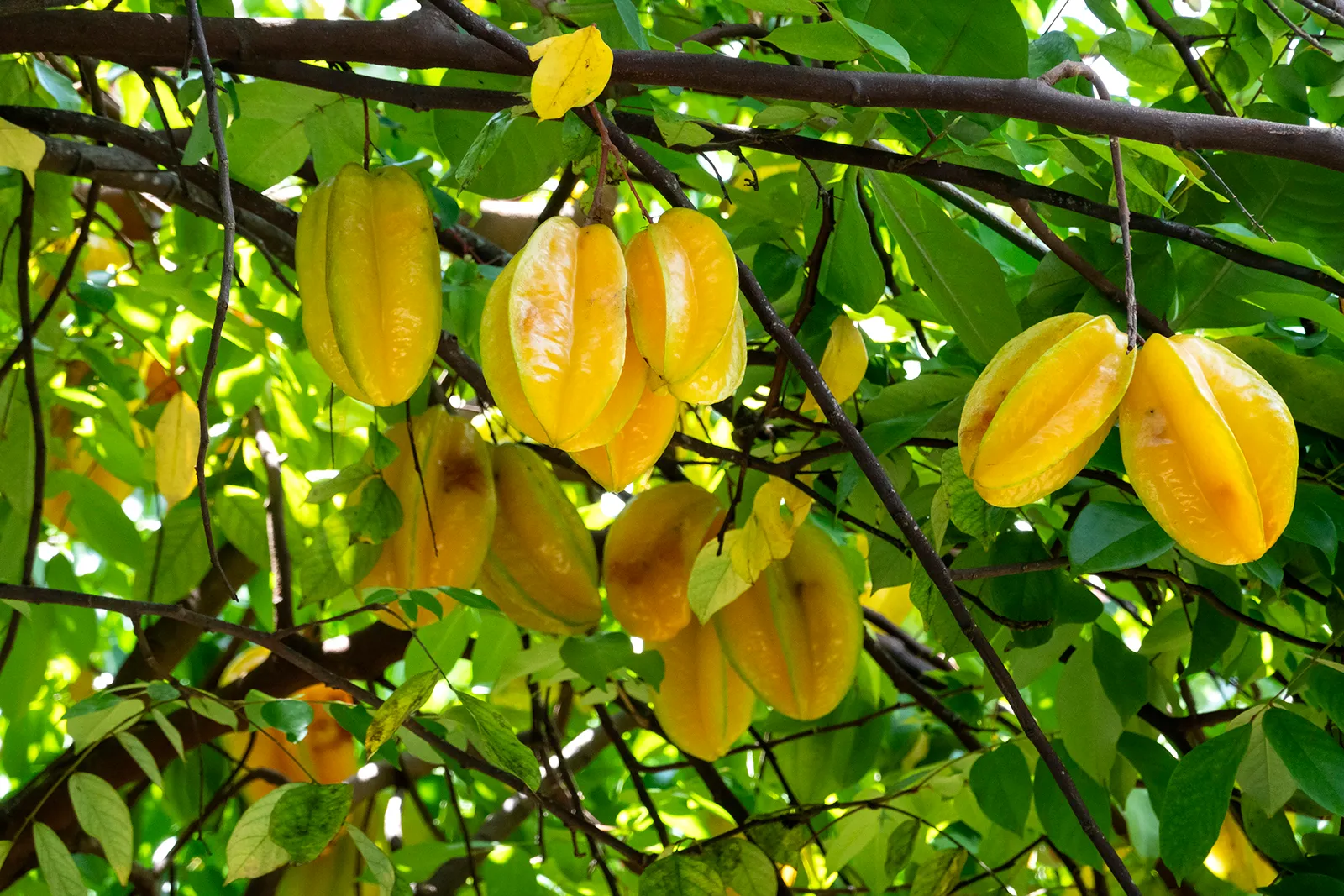Carambola, also known as star fruit, is a species of tree in the family Oxalidaceae native to tropical southeast Asia, where it is cultivated since ancient times. The fruit is used in traditional Asian medical to treat Chickenpox, intestinal parasites, headaches and other illnesses.
It has several common names, including carambola, star fruit and five-corner. It is a small tree or shrub that grows 5 to 12 m (16 to 39 ft) tall, with rose to red-purple flowers. The flowers are small and bell-shaped, with five petals that have whitish edges. The flowers are often produced year round under tropical conditions. The tree is cultivated in tropical and semitropical regions for its edible fruits.
The species in the genus Averrhoa along with the species in genus Sarcotheca are the only woody, tree-like plants belonging to the Oxalis family Oxalidaceae. The Oxalis family has nearly 900 species; most are herbaceous perennials or annuals native from tropical and semitropical locations, although a number also grow in other parts of the world. Averrhoa has sometimes been placed in the family Averrhoaceae. Averrhoa carambola is one of two species in the genus Averrhoa, both have edible fruit; the other species A. bilimbi, which is sometimes called the bilimbi or the cucumber tree, is limited to tropical regions. The fruits of A. bilimbi are too sour to be eaten raw, while the sweet forms of A. carambola are eaten raw. The fruits of A. bilimbi and the sour forms—which have high oxalic acid content—of A. carambola are pickled and made into jelly, jam, and juice.
Averrhoa carambola is a small, slow-growing evergreen tree with a short-trunk or a shrub. The branches are drooping and the wood is white and turns reddish. It has a bushy shape with many branches producing a broad, rounded crown. The compound leaves are soft, medium-green, they are spirally arranged around the branches in an alternate fashion. The pinnate leaves have a single terminal leaflet and 5 to 11 nearly opposite leaflets, each leaf is 15–20 cm long, and the 3.8–9 cm long leaflets are ovate or ovate-oblong in shape. The top sides of the leaves are smooth and the undersides are finely hairy and whitish. The leaflets are reactive to light and tend to fold together at night, they are also sensitive to abrupt shock and when shaken tend to close up also. The lilac or purple-streaked, downy, flowers are produced in the axils of leaves at the end of twigs. The flowers are arranged in small clusters on the ends of the branches or sometimes on the larger stems and trunk, each cluster is attached to the tree with red stalks. The bell-shaped, perfect flowers, are produced in loose panicles that are much-branched with pedicellate flowers; each flower is around 6 mm wide, with 5 petals that have recurved ends. The fruits are showy with an oblong shape: they are longitudinally 5- to 6-angled and 6.35–15 cm long and up to 9 cm wide. The fruits have a thin, waxy skin that is orange-yellow colored. The juicy fruits are yellow inside when ripe and have a crisp texture and when cut in cross-section are star-shaped. The fruits have an oxalic acid odor, which varies between plants from strong to mild, the taste also varies from very sour to mildly sweetish. Each fruit may have up to twelve 6–12.5 mm long seeds, which are flat, thin and brown. Some cultivated forms produce fruits with no seeds.
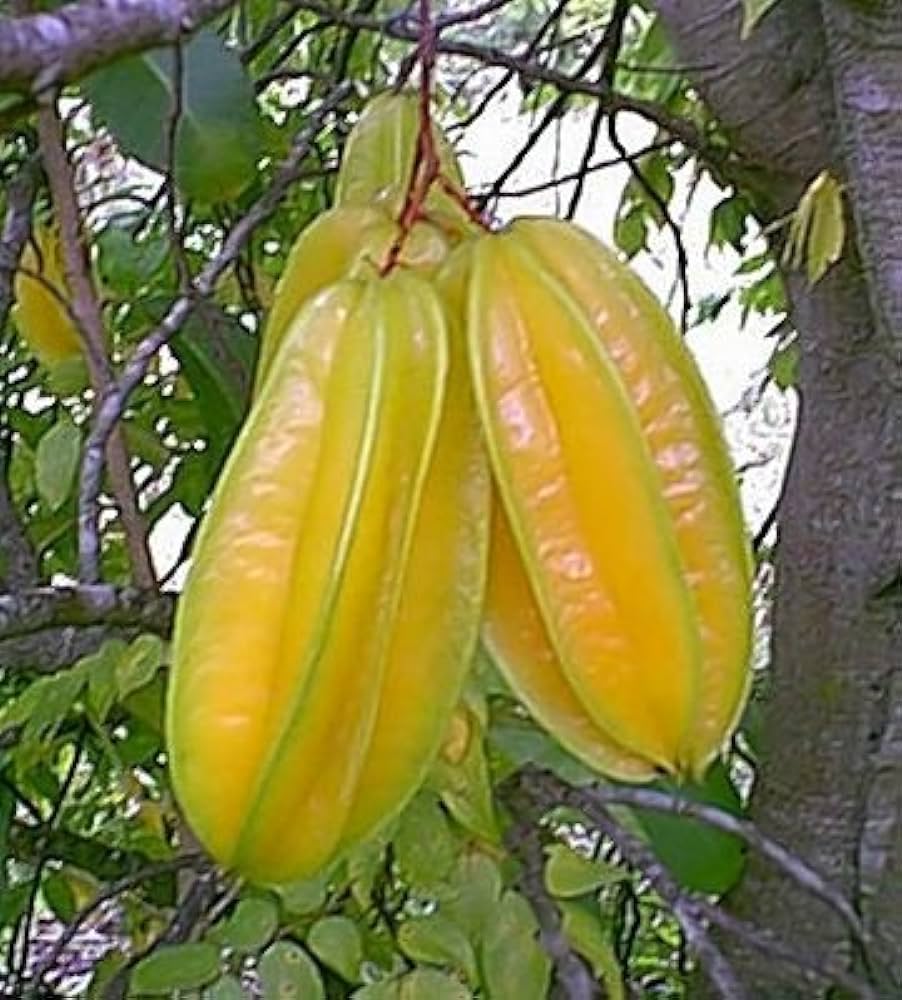
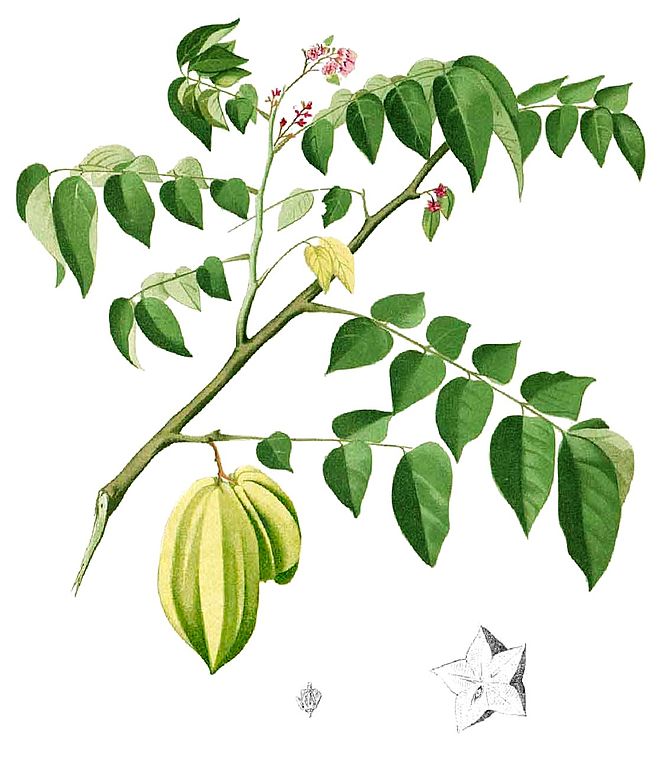
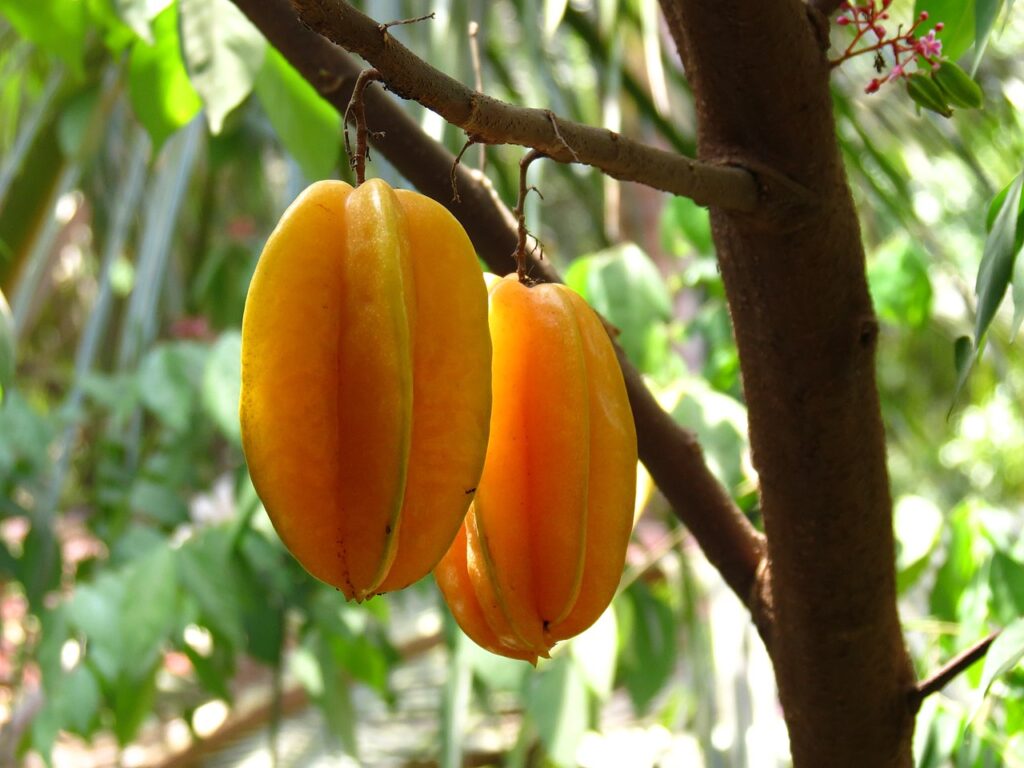

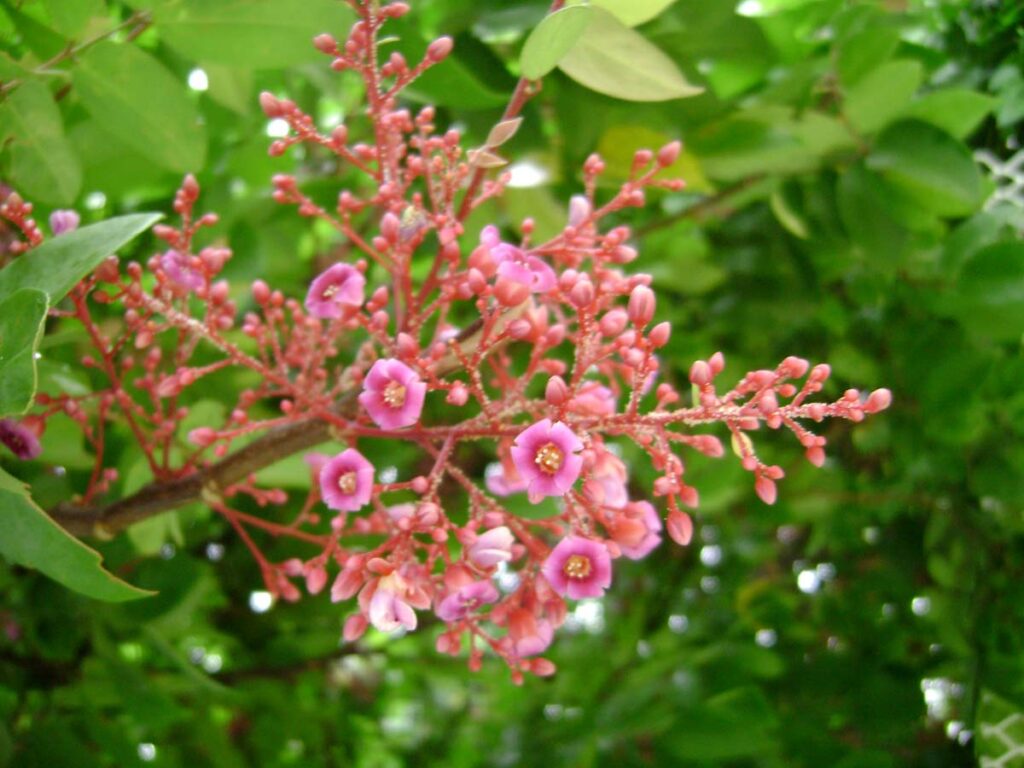
Source: Wikipedia

